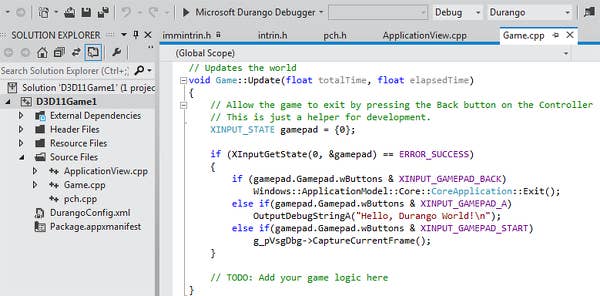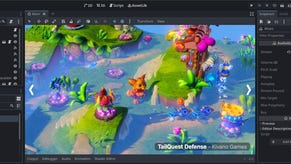Orbis unmasked: what to expect from the next-gen PlayStation
Digital Foundry presents hard data on the technology inside Sony's new console... and its upcoming Xbox rival
Both the next generation PlayStation - and its Xbox competitor - feature eight-core CPUs clocked at 1.6GHz according to sources trusted by Digital Foundry. The main processor architecture driving both consoles is said to be derived the new "Jaguar" technology currently in development by Intel's arch-rival, AMD. These are low-power processor cores designed for the entry-level laptop and tablet market, offering an excellent ratio between power consumption and performance. The PC Jaguar products are set to ship later this year in a quad-core configuration - next-gen consoles see the core count double with some customisations added to the overall design.
Married to the eight-core processor, Orbis also features Radeon HD graphics hardware. We've previously suggested that AMD's mobile "Pitcairn" design - the Radeon 7970M - could be a strong basis for a next-gen console graphics core in terms of power consumption and die-size. Running at 850MHz and featuring 20 of AMD's "Graphics Core Next" compute units, our information suggests that Orbis shaves off 10 per cent of that number, offering up 18 CUs in total, and sees a mild downclock to 800MHz. Incorporated into a design dedicated to cutting-edge visuals and gameplay, this hardware has some serious potential.
It is perhaps more than coincidence that these specs offer up the 1.84 teraflops metric for the Orbis GPU that was mooted yesterday, assuming that the figure is calculated in the same way that it is for AMD's current "Graphics Core Next" range of products. At this time we cannot confirm the make-up of the Durango graphics hardware - rumours have circulated for quite some time that it is some way behind Orbis, but equally there has been the suggestion that the GPU itself is supplemented by additional task-specific hardware. We could not confirm this, but an ex-Microsoft staffer with a prior relationship with the Xbox team says that two of these modules are graphics-related.
However, there's a fair amount of "secret sauce" in Orbis and we can disclose details on one of the more interesting additions. Paired up with the eight AMD cores, we find a bespoke GPU-like "Compute" module, designed to ease the burden on certain operations - physics calculations are a good example of traditional CPU work that are often hived off to GPU cores. We're assured that this is bespoke hardware that is not a part of the main graphics pipeline but we remain rather mystified by its standalone inclusion, bearing in mind Compute functions could be run off the main graphics cores and that devs could have the option to utilise that power for additional graphical grunt, if they so chose.
Video: The Radeon 7970M laptop GPU appears to be a pretty close match for the processing tech inside the next-gen PlayStation - there's a small reduction in clock speed and the amount of compute units, but otherwise it's very close. Here's what this tech can achieve in pure PC terms with Crysis 2 performance compared at the very high and extreme graphical presets. Freed from Windows and incorporated into a fixed console design, this GPU will really have room to show us what it's truly capable of.
Previous rumours have suggested that Orbis runs its CPU cores along with some graphics hardware inside a standalone, custom AMD Fusion core with a separate, discrete GPU. Our sources suggest otherwise - all of these elements are embedded into the same piece of silicon, and we can confirm that the internal codename for the processor is indeed "Liverpool", as was mooted some time ago. Sony does have some form here for pushing the envelope - PlayStation Vita represents the only mobile GPU processor that combined quad-core ARM Cortex A9s with the PowerVR SGX543 MP4. Even on the power-hungry iPad 3, Apple stuck with dual-core CPU architecture at the same 45nm fabrication node.
"Orbis has a singular focus on delivering high-end performance without breaking the bank - our take on the specs is that this is a machine built to last with a huge amount of potential."
The news that so much processing power is packed onto a single processor is highly significant to the point where credibility could be stretched somewhat. However, helping to explain matters is the make-up of AMD's Jaguar tech - each core occupies just 3.1mm2 of die-space at the 28nm fabrication standard. Factor in L2 cache, and the overall CPU component could be as little as 75-80mm2 in total. That's in contrast to the 235mm2 of the launch PS3's Cell processor and the 240mm2 of the Emotion Engine chip inside the original PlayStation 2 - neither of which factored in the separate graphics hardware, which in both cases was even larger. By our reckoning, the more efficient eight-core set-up still leaves plenty of space for integrating the main GPU onto the same die, with space to spare. This offers up significant production cost savings and brings down overall power consumption.
Bearing in mind that the 7970M draws just 75W and that Orbis cuts out a couple of compute units in combination with a drop of around six per cent reduction in clock speed, we can easily envisage the unit drawing no more than 150W from the mains overall once we factor in RAM, CPU and storage power draw. This compares favourably to consumption that sailed perilously close to 200W on the original versions of the Xbox 360 and PlayStation 3 and should reduce the dangers of another RROD/YLOD debacle.
Video: Here's what a mobile Intel quad-core with Radeon 7970M can achieve on Battlefield 3 - superb performance at 1080p on medium settings and still highly impressive on the high preset. This is the kind of ballpark processing performance we expect to see on next-gen consoles, but bear in mind this is couched in PC terms. In a dedicated gaming box, we should expect much better once developers get to grips with the hardware.
We also have hard data on Orbis's memory set-up. It features 4GB of GDDR5 - the ultra-fast RAM that typically ships with the latest PC graphics cards - with 512MB reserved for the operating system. This is in stark contrast to the much slower DDR3 that Durango will almost certainly ship with. Microsoft looks set to be using an offshoot of eDRAM technology connected to the graphics core to offset the bandwidth issues the use of DDR3 incurs. Volume of RAM is the key element in Durango's favour - there'll be 8GB in total, with a significant amount (two sources we've spoken to suggest 3GB in total) reserved for the OS.
"The next-gen Xbox refines DirectX 11 for a fixed hardware gaming platform while Orbis sees a revised version of the LibGCM API used on PlayStation 3 and PS Vita."
There'll be a relatively high CPU overhead too, with potentially two cores reserved for the customisable apps Microsoft wants to run in parallel with gameplay. Orbis has no such ambitions and may power past the new Xbox simply because it focuses its resources on out-and-out games power. There's always the possibility that Microsoft has looked at the prior success of Nintendo and its own Kinect and come to the conclusion that chasing after the maximum in raw horsepower isn't the way to win the next console war.
While Durango continues to hoard many of its secrets, we now have a very good idea of the basic architectural outline of the next-gen PlayStation. So the question is, what sort of performance ballpark are we talking about here? In our Radeon 7970M review, we ran Battlefield 3 on medium settings, and Crysis 2 likewise on its very high preset - both at the magical 1080p60. With some frame-rate drops we could ramp that up to high and extreme respectively for a perfectly playable, visually arresting experience. In our tests the Radeon GPU ran in concert with a 2.3GHz Intel quad-core CPU; bearing in mind the firm's domination over AMD in single-thread performance, not to mention the Turbo Boost technology that automatically overclocks the CPU to thermal limits, we reckon this is a fairly good ballpark comparison to an eight-core AMD CPU (primarily aimed at entry level markets, remember) running at a relatively low clock speed.

Of course, these ballpark tests are not the be-all-and-end-all of next-gen power - let's not forget that the new consoles are dedicated games machines gifted with a host of advantages over PC hardware. Factor out the overhead of the Windows OS, introduce ever-evolving development tools written for a fixed platform, and consider the performance advantages of a dedicated design - particularly the fast interconnects between CPU, GPU and RAM. What we have here is hardware that easily punches above its weight compared to performance couched purely in PC terms. It's a state of affairs borne out by both the Xbox 360 and PlayStation 3: by 2007, PC hardware had already moved significantly beyond the raw horsepower offered by current-gen consoles, yet games like God of War 3, Halo 4 and Uncharted 3 have extracted visual performance that could only have been dreamed of back then. Based on what we know about the next-gen consoles, there's little reason why history can't repeat itself.
That said, the AMD connection that defines both Durango and Orbis confirms that both consoles are much closer in design to gaming PCs than their predecessors, which may result in stronger ports to the computer format, not to mention the upcoming Steam Box - a piece of hardware free to evolve and grow more powerful year upon year in a way that Sony and Microsoft's boxes can't. And surely Valve must be looking at these specs with perhaps a little relief - AMD's CPU architecture is designed with power efficiency in mind, and in pure performance terms, even an eight-core set-up should be comfortably out-performed by a fast, modern desktop Intel quad-core processor. In developing and optimising next-gen titles for the lower power console CPUs, it would be richly ironic if PC owners reaped the benefits...









